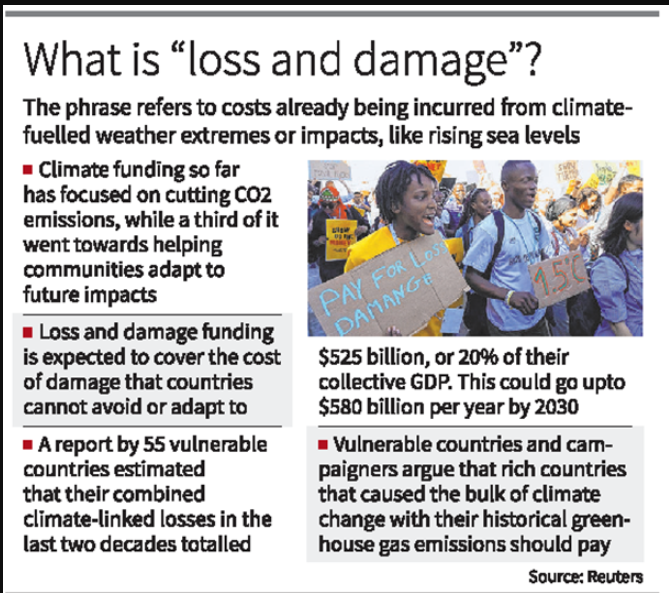Recently, Adaptation and Loss and Damage (L&D) are in sharp focus due to intensification of climate crisis.
|
Adaptation |
L&D |
|
It refers to the actions taken to reduce the negative impacts of climate change |
It refers to the financial support provided to the countries that suffer from the unavoidable and irreversible impacts of climate change. |
|
It is a proactive response to cope with climate challenges |
It is the irreversible consequences that cannot be avoided or mitigate. |
|
It involves reducing emission to prevent future climate impacts |
It involves investments in issues that will reduce the severity of impacts |
|
Example- Building sea walls, planting drought-resistant crops, installing renewable energy sources. |
Example- Compensation for the loss of lives, livelihoods, land or cultural heritage due to extreme weather events, sea level rise, or desertification. |
To know about Loss and Damage fund, click here
Historic pollution has elevated the world’s average surface temperature by more than 1 degree Celsius.

Common But Different Responsibilities (CBDR)
References